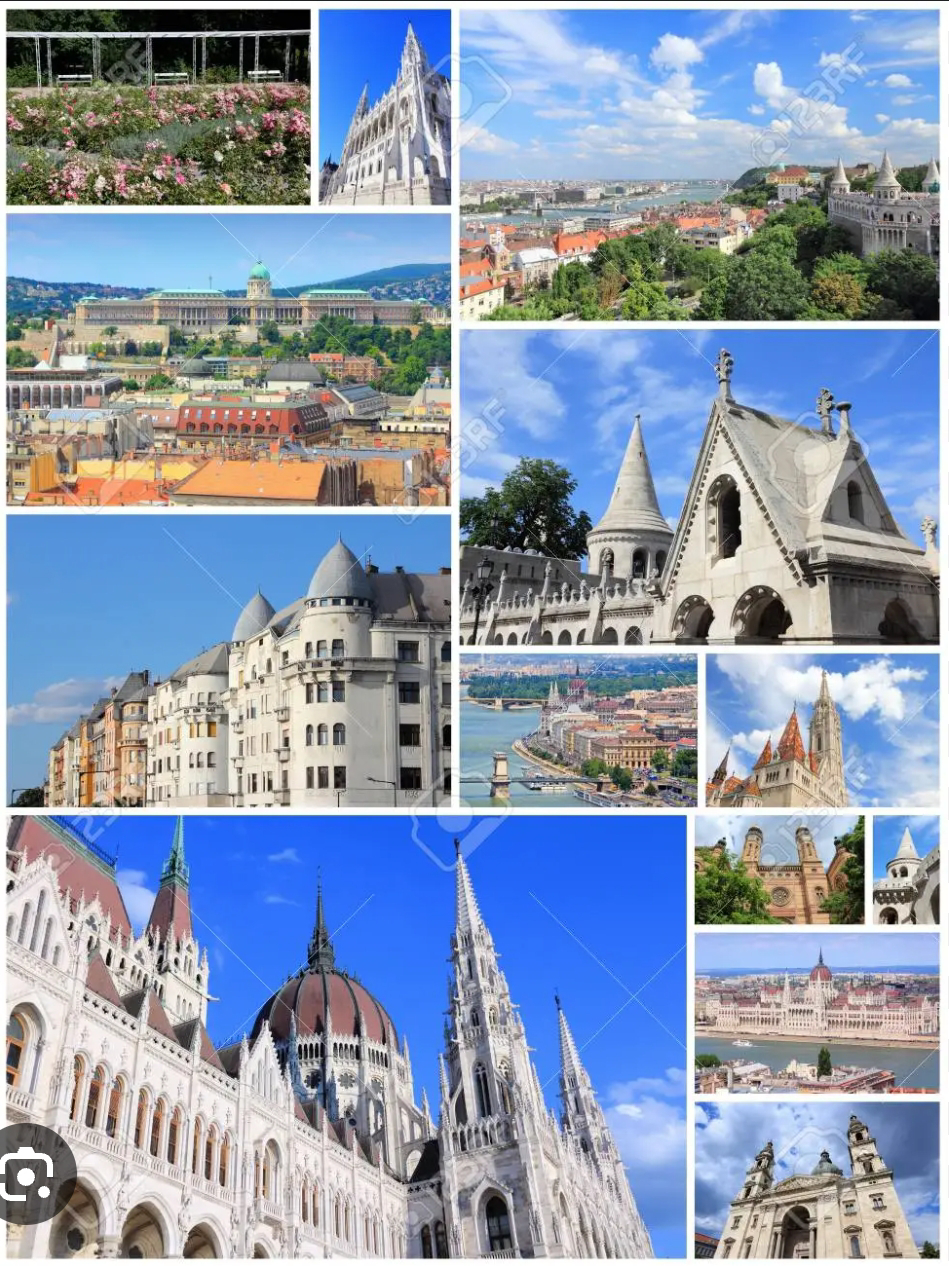UNESCO or The United Nations Educational, Scientific and Cultural Organization, is a specialized agency of the United Nations (UN). It was established on November 16 1945 with the aim of promoting peace, sustainable development, and intercultural dialogue through education, science, culture, communication, and information...
UNESCO is a world organization whose job is to promote international peace through education, culture, science, and communication among all member nations of the United Nations. Its purpose is to establish peace and security through international cooperation of education and culture, so that a global consensus can be reached for justice, rule of law, human rights and fundamental freedoms as described in the Charter of the United Nations.
What are the functions of UNESCO?
1-The main function of UNESCO is to promote peace and prosperity in the world through education, culture and science. And for this UNESCO keeps on organizing different types of programmes.
UNESCO's job is also to find places that have some kind of historical, scientific or cultural significance and how to protect them. Along with this, UNESCO also works to promote education in the world and to make the world aware about education. In this context, World Literacy Day is organized by UNESCO every year on 8 September.
To make the world aware of education and to provide essential things for school children and teachers.
To provide protection to things of cultural, historical and scientific importance.
Along with this, UNESCO provides protection to the vanishing languages around the world by finding them. A UN report "Atlas of the World Languages in Danger" found 2500 languages that were almost on the verge of extinction.
Another main function of UNESCO is that it also provides protection to journalists. Along with this, it also works to train journalists to work in dangerous places.
UNESCO has several key objectives which include:
1. Education: UNESCO works to ensure inclusive and quality education for all people, promoting lifelong learning opportunities, and supporting educational systems worldwide.
2. Science: UNESCO supports scientific research, cooperation, and the dissemination of scientific knowledge. It emphasizes the importance of science in addressing global challenges and sustainable development.
3. Culture: UNESCO promotes the preservation and protection of cultural heritage, both tangible and intangible, through the recognition of World Heritage Sites, safeguarding of cultural practices, and fostering cultural diversity.
4. Communication and Information: UNESCO advocates for freedom of expression, media development, and access to information. It promotes media literacy, press freedom, and the use of communication and information technologies for social development.
UNESCO operates through various programs and initiatives, including the World Heritage Sites program, the Education for Sustainable Development program, the Man and the Biosphere program, and the Intangible Cultural Heritage program. It also administers the UNESCO World Heritage List, which recognizes and protects sites of outstanding universal value.
The organization consists of 195 member states and 10 associate members. It encourages international cooperation and collaboration in its areas of competence, and its headquarters are located in Paris, France.
UNESCO World Heritage Sites:
A World Heritage Site is a landmark or area with legal protection by an international convention administered by the United Nations Educational, Scientific and Cultural Organization (UNESCO). World Heritage Sites are designated by UNESCO for having cultural, historical, scientific or other forms of significance. The sites are judged to contain "cultural and natural heritage around the world considered to be of outstanding value to humanity".
The World Heritage emblem is used to identify properties protected by the World Heritage Convention and inscribed on the official World Heritage List.
UNESCO World Heritage plaque at Þingvellir National Park in Iceland
To be selected, a World Heritage Site must be a somehow unique landmark which is geographically and historically identifiable and has special cultural or physical significance. For example, World Heritage Sites might be ancient ruins or historical structures, buildings, cities,[a] deserts, forests, islands, lakes, monuments, mountains, or wilderness areas.A World Heritage Site may signify a remarkable accomplishment of humanity, and serve as evidence of our intellectual history on the planet, or it might be a place of great natural beauty. As of June 2023 a total of 1,157 World Heritage Sites (900 cultural, 218 natural, and 39 mixed properties) exist across 167 countries. With 58 selected areas, Italy is the country with the most sites on the list; China is the second with 56 sites, and Germany is the third with 51..
Indian world heritage site:
India is a beautiful and diverse country, known for its vibrant cultural heritage, eye-catching architectural gems, and interesting landscapes. No wonder it boasts so many stunning UNESCO World Heritage sites spread across different states and union territories. Apart from the widely popular Taj Mahal, Sun Temple, Qutub Minar and Ajanta-Ellora Caves, there are many more cultural and natural sites in the country that are a part of the UNESCO World Heritage Sites list. After the latest additions in July 2021, there are a total of 40 UNESCO Heritage Sites in India. Out of these, 32 are cultural, 7 natural and 1 is mixed type.
The List Of World Heritage Sites in India:
Ajanta Caves, Maharashtra- 1983
Ellora Caves, Maharashtra- 1983
Red Fort, Agra- 1983
Taj Mahal, Agra- 1983
Sun Temple, Orissa- 1984
Mahabalipuram Monuments, Tamil Nadu-1984
Kaziranga National Park, Assam- 1985
Keoladeo National Park, Rajasthan- 1985
Manas Wildlife Sanctuary, Assam- 1985
Churches and Convents of Goa, Goa- 1986
Monuments of Khajuraho- 1986
Monuments of Hampi, Karnataka- 1986
Fatehpur Sikri, Agra- 1986
Elephanta Caves, Maharashtra-1987
Great Living Chola Temples, Tamil Nadu- 1987
Pattadakal Monuments, Karnataka- 1987
Sunderbans National Park, West Bengal- 1987
Nanda Devi and Valley of Flowers National Park, Uttarakhand- 1988
Monuments of Buddha, Sanchi- 1989
Humayun’s Tomb, Delhi-1993
Qutub Minar and its Monuments, Delhi- 1993
Mountain Railways of Darjeeling, Kalka Shimla and Nilgiri, West Bengal, Himachal Pradesh and Tamil Nadu- 1999
Mahabodhi Temple, Bihar-2002
Bhimbetka Rock Shelter, Madhya Pradesh- 2003
Chhatrapati Shivaji Terminus, Maharashtra-2004
Champaner- Pavagadh Archaeological Park, Gujarat- 2004
Red Fort, Delhi- 2007
Jantar Mantar, Delhi- 2010
Western Ghat, Karnataka, Kerala, Tamil Nadu and Maharashtra- 2012
Hill Forts, Rajasthan-2013
Rani ki Vav, Gujarat- 2014
Great Himalayan National Park, Himachal Pradesh- 2014
Nalanda, Bihar-2016
Khangchendzonga National Park, Sikkim- 2016
Architectural Work of Le Corbusier, Chandigarh- 2016
The Historic City, Ahmedabad -2017
Victorian Gothic and Art Deco Ensemble, Mumbai- 2018
The Pink City, Jaipur- 2019
Kakatiya Rudreshwara Temple, Telangana -2021
Dholavira, Gujarat- 2021









No comments:
Post a Comment